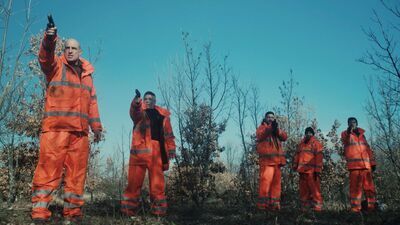Because you were working with other people?
TP: Yes. We were really thinking about that. It was a great exercise for us.
Normally you do everything yourselves. What was it like to give the technical aspects over to other people?
JA: That was a wild experience, but it was a wonderful time because it helped us grow as storytellers and filmmakers. Because what you find out when you’re working with the industry, I would say, is that there’s rules. The only way it works is if you follow the rules. And we’ve grown up making movies with no rules.
So now we see the rules, and we can apply any rules we like, but we can also go back to the way we make films with no rules and beside what we’re consciously keeping out or adding. For example, we’ve never used lights in our entire career, but [on “Hell Hole,”] day one, there’s lights and it’s like, “oh my God! Lights!”
I remember noticing the natural light in “The Deeper You Dig.”
TP: And the camera wasn’t in [John’s] hands, which was very new.
JA: And we usually paint with the camera. We use natural light. If it’s a cloudy day, it’s a cloudy day [in the film]. You figure out how to make it look great. This was a different experience. It was something that we never could have learned on our own.
TP: I was honestly a little overwhelmed at first, just because there were so many people. If you’re usually one to four people, and then you have 50 people on a set, it’s a different dynamic. I was a little shell shocked, but I’ll be honest, it only made me stronger. And I loved the education. I valued it. And there were things that were really fun, like, “oh, I don’t have to lug that into the woods?”
[Laughs] Yeah, someone else carried the heavy stuff.
TP: “I’m not allowed to touch it? No problem.” [Laughs] I’m not going to lie, I was happy about certain things. But it is a lesson when you learn how to collaborate with people, which I’m sure it is for people who’ve been doing it forever, too.

